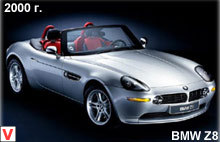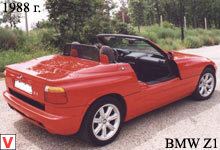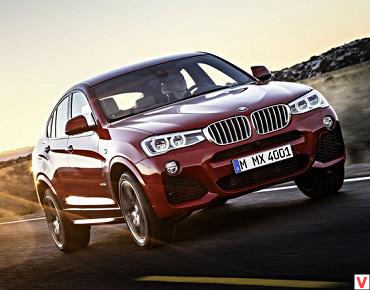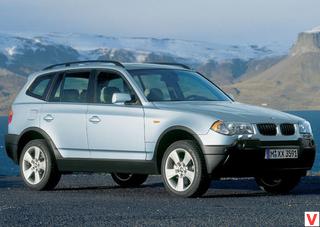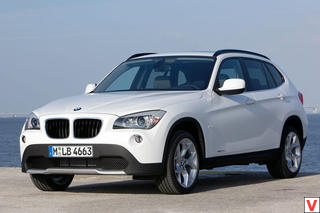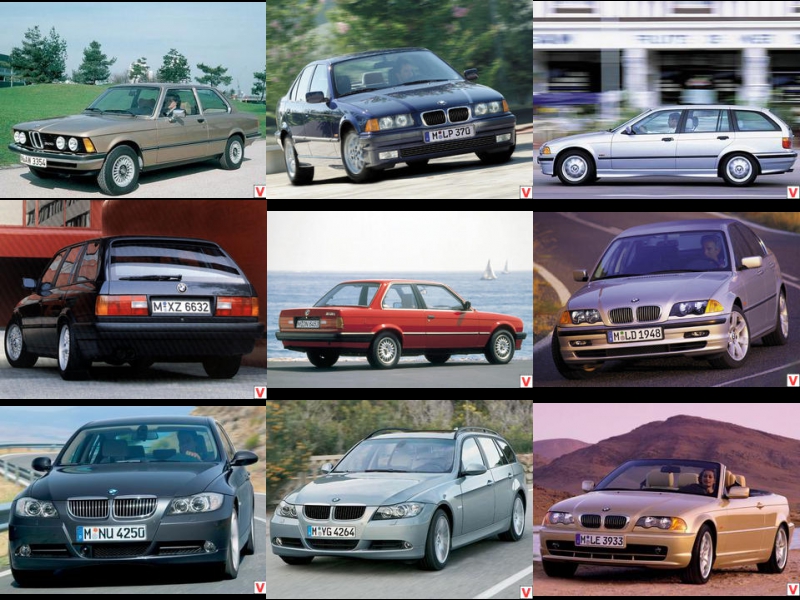
BMW E21 - the first body of the BMW 3 Series (two-door coupe) - was first introduced in July 1975 as a worthy change of the legendary Coupe 2002 (bodies 114 and E10). The only model 114-1502 was produced for some time in parallel with the E21 and was offered as an economical car during the fuel crisis. The E21 front suspension is of the McPherson type with the racks tilting back to improve steering responsiveness. The front stabilizer was also used as a tie rod support. Front brakes - ventilated discs with a fixed caliper and two pistons.
Rear brakes-drum type (on the powerful - disc). The rear suspension - which has now become a classic for BMW - are independent, with oblique levers and struts. The first E21 models were 315, 316, 318, 320 and 320i. The letter “i” meant using a Bosch K-Jetronic injector (also known as CIS, Continuous Injection System) instead of a Solex carburetor. Equipped with a car already known and tested by that time the engine M10. In such cases, the car was produced until September 1977, when BMW introduced a completely new six-cylinder engine for the 3rd series. The new engine received the code M60. Later in a slightly revised form, this engine became known as the M20.
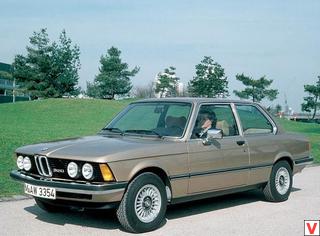
It was designed to fill the space between the small four-cylinder M10 and large six-cylinder engines from 2.5 liters and up. The new engine was called "baby-six" - M60 "small six". The power supply system of the 2-liter engine was equipped with the same Solex carburetor, a 2.3-liter K-Jetronic injector, similar to that used in the 2-liter M10, but with 6 injectors instead of four. Simultaneously with the change of the engine, the company made a number of changes in the chassis. At the end of 1979, new changes were made to the body of the E21. Changes in the engine compartment allowed finally to cram the fan with the drive from the engine into the 6-cylinder models.
But in the 4-cylinder had to make a special radiator fasteners to leave it in the same place. The interior has changed somewhat, in particular - the control panel for heating and ventilation. This year, the 4-cylinder M10 engine with an injector, produced from 77 to 79 years exclusively for the United States, is finally gone. Instead, there was a modification of the M10 1.8 liter engine with a new K-JetronicLambda injector and catalyst.
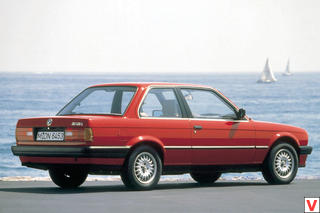
In the middle of 1983, the production of the E21 body was discontinued due to the appearance of the following - the second treshka body with the E30 index. This car was immediately waiting for a big hit, which forced even Mercedes-Benz to launch its famous model 190 (W201). The BMW E30 premiered in 1982, then a coupe appeared, and a year later a 4-door sedan. The interior leaves no doubt that BMW is in front of us - the central part of the dashboard is deployed to the driver. Instruments informative, controls in place.
Discontent can cause unless the cramped cabin. Behind it is better to sit together. Interestingly, access to the back seat in the four-door "three-piece" E30 series is much worse than in the two-door: the rear door opening is narrow and uncomfortable. A high-raised edge of the trunk sedans complicates the loading of luggage. With the appearance in November 1982, two-door sedans (still the so-called transitional series, later fully modernized for all units) BMW 316 (1.8 l, 90 hp with a carburetor), 318i (105 hp) and 323i (the traditional inline "six" in 139 hp with injection), all models with a 5-speed gearbox on request, BMW has confirmed its viability.
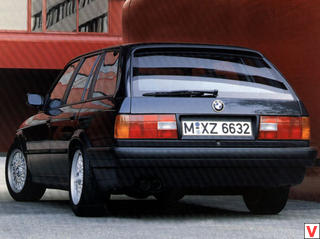
In these cars, emphasis was placed on comfort, but within the framework of a sporty style, which was manifested in the interior design: a discreet interior style with functionally executed comfortable controls. The success of the model in the first months of sales made it possible to supplement the program of the family with the 320iA variant (2.0-liter 129-strong inline-six, together with a 4-band automatic transmission).
But BMW had to expand this model range: at the end of 1984, the catalytic converters were installed on the “318i” (with the LU-Jetronic injection system) and the six-cylinder “323 ″ and in July 1985, the outdated 2.3-liter row was replaced with a delay "Six" on the 2.5-liter 171 —strong (325i). In December 1985, new models were launched into production: 325K (with four-wheel drive) and 325i convertible. These models enjoyed a limited, but steady demand among fans of active driving or active pastime. At the same time, the production of low-priced 324o sedans began with rumbling six-cylinder diesels (the first in BMW history).

In August 1986, fans of the brand were pleased with the appearance of the M3 model with an injector 200-horsepower 6-cylinder 2.3-liter engine. Although, due to the obligatory catalytic converter and due to the increased resistance in the exhaust duct, the power actually turned out to be 5 hp. less. Externally, the M3 was distinguished by extended wings with low-profile tires of dimension 205/55 R15 and “developed” bumpers and sills. The value of accelerating dynamics (6.8 s to hundreds) has long become a dividing line, beyond which real sports supercars have already begun.
But from the second hand it is worth taking an emku very carefully, for lovers of "spur" for the most part do not differ in accuracy of riding (especially here in Russia). BMW models of the third series in September 1988 were restyled. On the car began to install new headlights. Upgraded shape of the rear and rear lights. In the vast range of engines, a new injection 100-hp 1.6-liter engine appeared, which did not differ in fuel efficiency or acceleration dynamics. But the stiffer suspension and the tachometer needle, jumping on the half-shells when you press the accelerator pedal, were made to believe that the “316i” is the brother of the M3, but very small and weak.
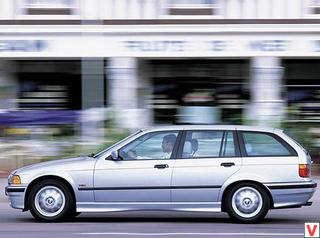
From the same time, "emku" began to produce in the form of a convertible. The first station wagons are dated February 1989 (they were released until 1994). The range of engines for them was completely identical to that of the sedan. The size of the Touring cabin varies from 370 to just 1125 liters, so this model is not suitable as a camel for giving, despite the presence of a four-wheel-drive version of the 325K Touring in the range. Moreover, the suspension does not allow transporting more than 500 kg (including passengers).
No, it does not pierce - just at one point, it fails. In October 1989, the 318i sedan was revived with a 1.8-liter 115-horsepower gasoline engine with a 16-valve cylinder head. All engines, in addition to mechanical 5-speed gearboxes, were also equipped with 4-range automatic hydromechanical transmissions. These cars were mostly popular in the USA and the UK. In fact, the sports orientation of the BMW 3 Series, first of all, on the young wealthy people was obvious. In December 1991, the production of sedans (E30) was discontinued (the M3 coupe was still in 1990), until 1994 only Touring station wagons were produced.

The new “troika” with the E36 index replaced the E30 at the end of 1990. All the advantages inherent in the predecessor (EZ0) have been preserved and even increased in the new family. The striking characteristic appearance underlines the power and dynamics of the BMW corporate identity. Some time convertible and wagon remained from the old model range. The four-door sedan of the new series was successfully reworked and manned a'la M3 by many German tuning companies. But in half of the cases, these tuning “treshki”, bought both in other lands of Germany, and throughout Europe, as well as in the USA, were delivered to immature youths.
We exploited them, unscrewing the engines that were already weakened by forcing, not to mention the complete disregard of the regular service visit. In their youth, few people think about how much you can save on expenses in case of proper operation ... Therefore, experts do not recommend taking tuning machines dressed in armor and port car attributes: spoilers, deflectors, anti-wings, plastic skirts with hard, “Sports-clutched” shock absorbers, engines forced by additional turbines, variable geometry manifolds and other corresponding “weights”. Since October 1991, the sale of economical, but quick turbo diesel version 325td (8.9 l / 100 km in the urban cycle) began.

In January 1992, the two-door coupe 320i, 325i and M3 were introduced, and in September of the same year they were equipped with new engines with controlled valve timing. On the M3, they put the SMG system (a manual 6-speed manual gearbox with hydraulic gear shifting, which made it possible to drive on both the automatic gearbox and manual shift without the clutch pedal). The convertible of the new model range was replaced by the old model only in March 1993. As an option, it offers a removable aluminum top.
The emergence of a new 143-strong high-speed turbodiesel (maximum speed up to 214 km / h in sedans), first equipped with an intermediate air cooler (intercooler) occurred in October 1993. Since the winter of 1994/95, in addition to sedans and coupes, there were three-door Compact hatchbacks with economical engines with a displacement of 1.6 liters (102 hp), 1.7 liters (turbo diesel, 90 hp), 1.8 l (115 hp) and a 1.9-liter 140-horsepower with a 16-valve cylinder head. To reduce the price on it from behind instead of a complex multi-link suspension, like other models of the family, there is a simple dependent suspension with a continuous beam of the bridge.

Quintuple Compact (as envisioned by the company, youth-student version) is quite practical car for those who are not concerned about the transportation of things on their own: useful volume of the luggage compartment is from 300 to 1030 liters. In January 1995, the model 328i appeared with the newest aluminum row "six" (for the US market they kept the old one with a cast-iron block with a capacity of 93 hp), replacing the "325i", which strengthened BMW's position in the sector of economical sports models.
The long-awaited station wagon under the traditional name, which was absent from the production program of the year, was introduced in May 1995, when the model 323i premiered with a six-cylinder 170-horsepower engine, quickly taking off and giving out a hundred in just 8 seconds, and even more frisky “328i "(193 hp). Capacity for a compact wagon is not the most important thing; image is more important. The capacity of his trunk was only 1030 liters. It is indicative that for the “treshky” models the actual price / quality ratio is not actual, but the more subtle - price / power.
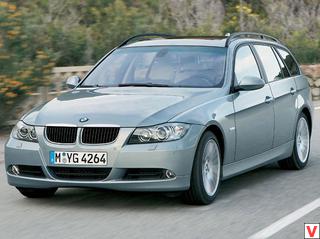
Especially since BMW is responsible for the quality, and it’s not up to power if the buyer doesn’t stand at the price. For the Russian market, the company has even developed a special Russian package: an increase in clearance of 25 mm, a softer suspension and an adapted ignition system. The next update of the models of the series 3 began in 1998. Then a new generation of E46 sedans started. In two years, the family of "threes" has been replenished with new coupes, Touring station wagons and cabriolets.
At the end of 2000, the 3-door Compact II hatchbacks, created on the E46 chassis, appeared. In general, sedans and all-rounders in this series have changed little in 2000. The main news is the emergence of two 2.2- and 3.0-liter gasoline engines and three basic complete sets for sedans, which immediately divided the buyers into supporters of sports style and comfort. For the former, the M sport is offered with sports seats and a steering wheel, a stiffer suspension and 17-inch wheels. There are purely external differences. Options Comfort and Top Comfort are designed for a softer ride and differ in both trim and interior equipment. The name Thor Comfort itself speaks of a high standard.

It includes expensive xenon headlights, electrically heated front seats, the inclusion of wipers on the rain sensor, etc. In June 2000, the model range of sedans and station wagons was supplemented with all-wheel drive complete sets of 330Xi and 330Xdi with a new power unit. New items have received a modified front suspension and all-wheel drive all the wheels through the transfer case with a chain of "Morse" and the center differential. In general, the transmission is similar to that used on the X5 SUVs.
Instead of mechanical differentials of increased friction, the ADB-X system of “automatic differentiation” is used, which allows redistributing tractive forces on the wheels, depending on their adhesion to the road surface, by means of a working brake system. In addition, the cars used the latest inline 6-cylinder engine with a displacement of 3.0 liters, created on the basis of the 2.8-liter unit. Piston stroke increased from 84 to 89.6 mm. Capacity increased by almost 20% - from 193 to 231 hp, which allowed heavier vehicles to have better dynamic performance compared to the conventional 328i and 328i Touring models.
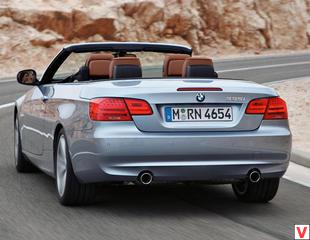
Two other models (330Xdi and 330 Xdi Touring) complete the well-known 2.9-liter turbo-charged 184 hp diesel engine. At the end of 2000, the whole “triples” family acquired new variants - 320i and 325i. For the first, the engine displacement increased G 2.0 to 2.2 liters, and the power - from 150 to 170 hp The working volume of the 2.5-liter unit model 323i remained the same, but as a result of the modernization, the power increased from 170 to 192 hp, and the index of the car was changed to 325i. The coupe family is now headed by the generally recognized leader among the cars of this class M3.
External differences of the car are in a different front bumper-spoiler with a larger air intake, stylish ventilation grilles on the sidewalls of the front fenders and special chrome-plated alloy wheels. In the salon there are sports seats, a “three-spoke” steering wheel with an abundance of various functional buttons and fashionable now chrome rims of round dials in the instrument panel. At 45 cc increased engine displacement M3. The world premiere of the convertible on the troika chassis was held in March 2000 at the Geneva Motor Show. The appearance of a convertible with a coupe is obvious, although the cars have different doors and rear fenders.
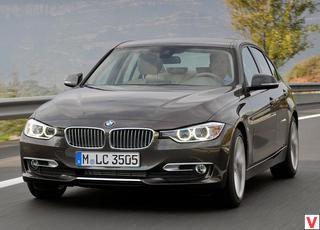
The cabriolet has a safety arch automatically triggered when overturning and a folding soft top, which fits into a special volumetric container and can be dismantled. In the cold season, a hard top is installed, turning the car into a full-fledged coupe. Since August 2000, the BMW M3 in the coupe and convertible versions has been offered with a second-generation Sequential M gearbox (SMG II) sequential gearbox. This is a clutchless manual gearbox, built on the "Formula 1" technology and having an automatic gear shift mode. Regardless of the body shape of the model, developers have achieved a high level of active and passive safety.
All models (with the exception of the 316i compact) are equipped as standard with ABS and ASC + T anti-slip system. Sedans are equipped with a braking force control system, for sedans with six-cylinder engines, an additional dynamic stability control system is also offered, which prevents the vehicle from skidding when cornering. The high level of passive safety provided by the zones of directional deformation is increased due to the use of pyrotechnic tensioners and seat belt anchors in the front seats. Models are equipped with airbags for the driver and front passenger, as well as side cushions located in the front doors.
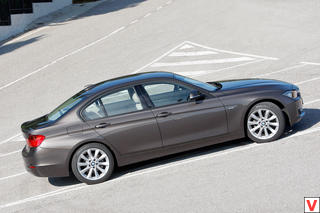
The new 3-series sedan is additionally equipped with ITS-type tubular airbags for head protection, which will increase the level of protection for side collisions by 200%. The new generation of the BMW 3-series hit the market in spring 2005. It has replaced the world-famous and seemingly ever-popular platform E46. The concern did not decide on a cardinal change of style, but limited itself to evolutionary changes, bringing the appearance of “treshki” in line with the design of older models. At the heart of the machine - the elongated platform of the 1st series.
This fifth generation, which passes under the code designation E90, has noticeably added in dimensions (4520x1813x1424 mm). The wheelbase is increased to 2760 mm. A remarkable fact: despite the fact that the new “treshka” is larger than its predecessor in all dimensions, it is lighter due to the use of lighter, but no less durable materials in the design: mainly aluminum and magnesium.
The design combines elements of the new models and the classic proportions of the predecessor. The appearance of the car has become more rapid. Sporty exterior adds a short front overhang of 755 mm. In addition, the car has large rear-view mirrors, versions 325i and 330i got a chrome grille. The salon is made in the new style characteristic of the latest BMW models. Recall that this five-seat sedan class D can be both rear-wheel drive and all-wheel drive.
The base engine for the 320i was a 2.2-liter gasoline six-cylinder engine with variable valve timing, 150 hp. The 325i received a 218 horsepower engine, and the 330i was equipped with a 258-horsepower unit. Gear boxes are 6-speed, manual or “automatic” Steptronic (optional). In Europe, in addition to gasoline engines, version 320d with a 2.0 liter turbo diesel R4 DOHC common rail II (163 hp, 340 Nm) is also offered. Comfortable ride provides comfortable suspension (front McPherson aluminum, rear multi-link), coupled with an excellent suspension. The basic version of the car does not have a leather interior, unlike the more expensive counterparts in the model range.
Standard equipment includes brake assist, electronic differential lock, brake lights of two-level brightness (their brightness changes depending on the pedal effort), DSG dynamic stabilization system, brake-assist system, electronic non-contact key (motor starts with a button), Servotronic hydraulic booster, climate control (optional 4-zone with a separate remote control for the rear passengers), six airbags and much more. For a fee, you can order a sunroof and xenon adaptive ("turning") headlights. A navigation system with an iDrive controller is also offered for an extra charge.
Six months after the debut of the sedan, the 3-series station wagon was introduced, which received the traditional name Touring (E91). It is curious that the sedan and station wagon for the first time in the history of the brand were designed simultaneously. Technically, with the exception of the body, the models are identical. When developing the station wagon, special attention was paid to the design of the luggage compartment. When the rear seat backrest is upright, the boot capacity is 460 liters.
If the rear seats folded in a proportion of 40:60, the useful volume of the trunk will increase to 1,385 liters. As before, it is not necessary to open the entire rear door for access to the trunk: light and small things can be immersed by lifting the glass of the fifth door. Since September 2006, the BMW 3 Series Coupe (E92) is mass-produced. Despite its technical relationship with the sedan and Touring, the BMW 3 Series Coupe has a bright and distinctive design. The exterior of this version is somewhat different from the sedan of the same name. The front part has become more sloping and understated, the front bumper has changed.
The design of the rear part became different, there appeared lights of the original form. In addition, the coupe has its own interior design, somewhat different from the version with a four-door body. Among the features of this model is the first use case in the Bavarian coupe of the xDrive all-wheel drive system (modification 325Ci), which previously could be found in the off-road models X3 and X5. The standard on all versions of the coupe installed xenon headlights. Another feature is that the coupe is longer than the sedan (length - 4580 mm, width - 1782 mm). The diesel version offers a three-liter turbodiesel with a capacity of 231 hp. Basic equipment is rich and can satisfy anyone.
Plus a variety of safety features - six airbags, Stability Control (DSC), Dynamic Traction Control (DRC), and braking control. A richer package Business Plus offers sports suspension settings, a multifunctional steering wheel, front sports seats. Additionally, you can order a 6-speed Steptronic automatic transmission instead of the standard “mechanics”, metallic color, Dakota leather upholstery, alloy wheels, rear valet, rain sensor, polished black trim or walnut trim, heated seats, automatic climate control, dynamic cruise control, catalytic converter, crankcase protection, electrically adjustable sunroof, etc. In 2010, BMW introduced the updated coupe and convertible 3-series.
Cars received new headlights with built-in ring of LED lights running light, modified bumpers with a different air intake, a new hood with broader branded "nostrils" and LED taillights. Each design element is sporty. Lightweight and sporty back attracts attention thanks to the powerful curved lines, as well as the rear spoiler, which is painted in body color. Another important detail is the new side mirrors. They are not as elegant as the old ones, but visibility is much better. Standard equipment includes bi-xenon dipped and main beam headlights, which provides excellent prospects and excellent visibility.
Xenon adaptive headlights are equipped with a dynamic corrector with modes for highways and cities, which provides optimal lighting. The perfect combination of functionality and elegance of style is achieved through the rings of daytime running lights with LED elements, side lights, which are located above the headlights and side lights. The stylish look of the car is complemented by tail lights with LED elements and brake lights. There are not so many changes in the cabin. The interior design is still thought out and elegant, all elements are made of high-quality materials - luxurious leather, expensive woods.
Now it is possible to order the finishing of a central panel made of walnut, bamboo or aluminum. The updated iDrive system is much more convenient than the previous one. Management has become clearer, and the large display does not glare in the sun and pleases with beautiful graphics. In the “top-end” versions, the audio system not only has a hard disk and “understands” external media (USB-drive or iPod), but is also capable of playing music even from a phone via Bluetooth. There is a voice control.
Sport button near the gearshift joystick changes the effort on the steering wheel and the accelerator pedal responses. Paddle switches changed the algorithm of their work. Glowing stripes in the doors and sidelines gently illuminate the interior. The backlight threshold is automatically activated when you open the door outside. When the doors open from the inside, the lights at the bottom of the lights come on. An electronic system for supplying seat belts is built into the side trim of the central pillars - when the driver or the front passenger sits in the seat, the system gives him a seat belt so that it is comfortable to reach him.
As in any other coupe, access to the rear sofa is limited. But to sit comfortably - two adults will fit there without any problems. Their services include a box in the armrest, a compartment with a curtain under it, an ashtray and individual ventilation deflectors. The main changes affected the line of power units, of which a great many are offered for the 3-series. At the top of the range is the new 3.0-liter power unit N55. One turbine instead of two, Valvetronic's proprietary valve control system instead of the throttle, high-precision direct injection. In fact, this means a wider range of effective work.
Maximum torque (400 N • m) is now reached at 1200 rpm and is available up to 5 thousand. This motor produces 306 hp. and 400 Nm of torque, thanks to which the BMW 335i version accelerates to a hundred in 5.3 seconds with mechanics and in 5.5 seconds on the machine (a seven-speed DCT “robot” with double clutch). Convertible copes with this task by two tenths slower. The maximum speed of both models is limited to 250 km / h. The BMW 3 Series 2010 coupe is equipped as standard with a 6-speed manual gearbox, the BMW 335dA with an automatic 6-speed gearbox. The BMW 335i and BMW 335dA are equipped with a tougher M-Series sports suspension.
Convertible visually differs from the coupe only folding top. Otherwise, similar changes. But the 210 kg version of the Coupe-Cabriolet is heavier than a two-door with a fixed roof. Hence, the loss in the dynamics - 5.8 seconds on the “handle” and 5.7 seconds with the DCT.
The hardtop convertible provides an acoustic comfort comparable to a coupe at high speeds. The process of folding the roof takes 22 seconds. To do this, you need 2 conditions - the machine must stand still, and the temperature cannot be lower than –10 degrees Celsius. The large heated rear window always provides excellent visibility even in winter. Hard folding roof, side windows and trunk can be opened with a key at a distance of 8 meters.
All cars are equipped with 17-inch alloy wheels; BMW Business satellite anti-theft system; xenon headlights with washers; fog lights; an updated multi-function leather sport steering wheel; external mirrors with heated electric adjustment and the function of storing the settings; air conditioning; BMW Business radio with CD and MP3 playback as well as ISOFIX child seat anchorages. The BMW 335i, BMW 335i xDrive and BMW 335dA models are equipped as standard with sporty, power-adjustable front seats with a function that memorizes driver seat settings.
The BMW 335i Convertible is equipped with an optional BMW EfficientDynamics package of measures that includes braking energy recovery system, shift indicator, intelligent lightweight designs, electric power steering, and tires with reduced rolling resistance. The sixth generation of the popular sedan was first introduced in the fall of 2011. The model received a factory index F30. The car offers fans even more comfort, safety, modern technology and modest fuel consumption for a sporty character. The developers of the company have given the sedan a fast-paced appearance, which, in a new way, interprets and consistently improves the BMW brand design.
The front part with the traditional "nostrils" of BMW, the new squinted headlights of the original configuration, the front bumper with foglights and additional air ducts, the sloping bonnet. On the side, the sixth generation is more aggressive than its predecessor, and the whole body with a sloping roof has become athletic. The back of the BMW F30 echoes the design decisions with the older 5th and 7th series. The coefficient of drag Cx-0,26.
The dimensions of the BMW 3 series have grown significantly: changes affected the track width (+ 37 mm in front, + 47 mm in the rear), body length 4,624 mm (+ 93 mm), width over mirrors 2031mm (+ 42 mm), height 1429 (+8 mm) and wheelbase 2810 mm (+ 50 mm). Clearance decreased to 140 mm. The cabin space has also changed in the direction of increasing, this is especially noticeable to passengers behind. Despite the increased size, the new BMW 3 Series sedan became 40 kg lighter than its predecessor.
Interior BMW F30 uses elements of the cabin of the 1st series (multimedia unit and climate control). But the materials used are higher than in the “edinichka”. Plastics pliable, soft and tactilely pleasant. The console is traditionally deployed in the direction of the driver.
Three-spoke steering wheel got leather rim. Ascetic devices were placed on the dashboard, for all its simplicity - informative and easy to read. Crowns the front dashboard multimedia display system. Adjust the driver's seat and front passenger enough in abundance.
Three lines of interior design are offered: “Modern Line”, “Luxury Line” and “Sport Line”. Each of the listed trim lines individually forms the character of a sports sedan. The luggage compartment has 480 liters of volume. Three power units with TwinPower Turbo technology are available. The BMW 328i is equipped with a two-liter four-cylinder engine with a power of 245 hp, which provides a maximum torque of 350 Nm at 1250 rpm.
Acceleration from zero to 100 km / h in 5.9 s. Average fuel consumption is only 6.4 liters per 100 km. BMW 335i is equipped with a straight six-cylinder engine of 3.0 liters, which develops a maximum power of 306 hp and a maximum torque of 400 Nm at 1200 rpm. Acceleration from zero to 100 km / h in 5.5 s.
Average fuel consumption is only 7.9 liters per 100 km. The BMW 320d is equipped with a two-liter four-cylinder diesel power unit, which is equipped with a Common-Rail direct fuel injection system and a turbocharger with a variable intake geometry. This engine develops a maximum power of 184 hp.
and a maximum torque of 380 Nm at 1750 rpm. Acceleration from zero to 100 km / h in 7.5 seconds. Average fuel consumption is only 4.5 liters per 100 km. The engines are paired with either a 6-speed manual gearbox or an eight-speed automatic gearbox. The car is equipped with the function of automatic shutdown and restart of the engine Auto Start Stop as standard.
All models of the line are equipped with a system for switching modes of movement, among which are the modes Comfort, Sport, Sport +, as well as an economical ECO PRO. It maintains a driving style with optimum fuel consumption and thus allows the cruising range to be increased in one gas station. The level of equipment of the BMW F30 is very high.
The integrated ConnectedDrive system combines service and entertainment functions: displaying information on the windshield, night vision camera and blind zones, adaptive cruise control, reading road signs and much more.
